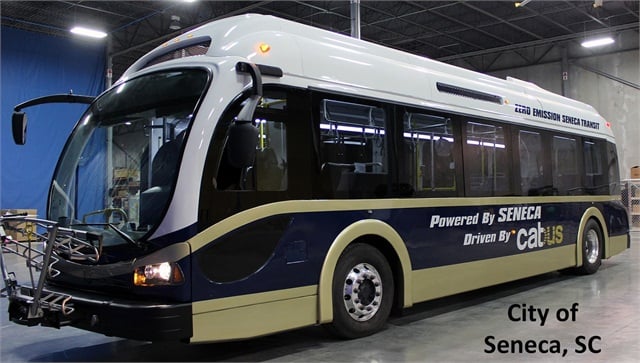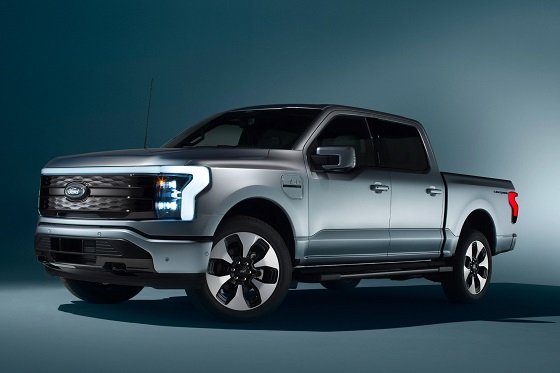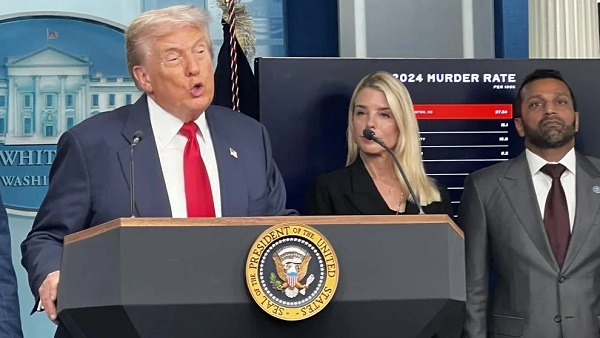Automotive
World’s first all-electric bus fleet shut down due to breakdowns and expense

From Heartland Daily News
Electric Buses Not a Panacea
Last week, the city of Seneca, South Carolina decided to shut down the Clemson Area Transit System, which served Seneca and nearby Clemson University. Once touted as owning the world’s first all-electric bus fleet, just a few years later two thirds of its expensive electric buses had broken down, the company that made them went bankrupt, parts were no longer available, and the city can’t afford to buy replacement buses.
Seneca is not exactly a major metropolis. But Clemson Area Transit isn’t the only transit agency to have trouble with electric buses. Just the day before Seneca decided to shut down its transit system, Austin’s Capital Metro announced that it was giving up on its plan to electrify its bus fleet by 2030. Electric bus technology, said the agency, simply hasn’t progressed far enough to replace Diesels.
California’s Foothill Transit, one of the first agencies to use rapid-charge electric buses in 2010, has also had problems. Like Austin, the agency had hoped to completely electrify by 2030. Instead, by 2020 most of the electric buses in its fleet were out of service. In 2021, the agency decided to return the buses even though doing so would require it to pay a $5 million penalty to the Federal Transit Administration, whose grant initially paid most of the cost.
The Southeast Pennsylvania Transportation Authority (SEPTA) may be the largest agency to have practically given up on electric buses. It pulled its 25-bus electric fleet out of service in 2021 when the buses were just five years old. The buses had suffered cracks in their chassis, but it appears that problem was only the straw that broke the omnibus’s back. “We do not feel the current [electric bus] technology is a good investment at this time,” concluded SEPTA’s general manager.
Transit agencies in Asheville, Colorado Springs, and several other cities have reported similar problems. Albuquerque completely gave up on its electric buses and returned them to the manufacturer, a Chinese company called BYD.
Electric buses cost 50 to 100 percent more than their Diesel counterparts. A 2019 study by US PIRG predicted that such buses would nevertheless save transit agencies $400,000 apiece over their lifetimes due to lower fuel and maintenance costs. US PIRG relied on four “success stories” to justify this conclusion. Success story number one was Seneca, South Carolina.
The report acknowledged Albuquerque’s problems but blamed them on the city’s hills and high temperatures. Compared with Austin, Albuquerque is practically flat and its temperatures are nowhere near as extreme. If electric buses can’t work in Albuquerque, they aren’t going to work in a lot of other cities.
Other than Albuquerque, one thing many of these failures have in common is electric buses manufactured by Proterra, one of four major electric bus manufacturers that have recently sold buses in the U.S. and the only one to actually be a U.S. company. In 2023, it claimed that COVID-related supply-chain problems had driven it into bankruptcy. The company’s three divisions — transit buses, batteries and drive trains, and charging systems — were sold to three other companies to pay Proterra’s debts and none of the buyers are supporting Proterra’s buses or even making similar buses. In view of the many problems transit agencies were having with its buses before 2023, it seems likely the supply-chain explanation was just a dodge for Proterra’s shoddy design and workmanship.
One reason for that may simply be opportunism on the part of bus manufacturers, including both Proterra and BYD. Before passage of the 2021 infrastructure bill, the federal government was paying 80 percent of the cost of Diesel buses but 90 percent of the cost of electric buses purchased by transit agencies. For a transit agency, that meant that an electric bus could cost twice as much as a Diesel bus without costing local taxpayers an extra dime. Bus manufacturers thus felt free to increase their profits by raising the price of their electric buses and, having done so, may have compounded the problem by cutting costs.
Beyond manufacturing defects, electric buses have several generic problems. First, while a Diesel bus can operate all day, an electric bus can operate only a few hours on a single time-consuming charge. Proterra claimed to have solved this problem with a rapid-charge system, but that didn’t prevent Foothill Transit from suffering enormous problems with its electric buses. This probably is particularly serious on long bus routes: Austin’s Capital Metro estimates that today’s electric buses could satisfactorily serve only 36 percent of its routes.
Second, the batteries needed to power electric bus motors are heavy, which is probably why SEPTA’s buses suffered cracks in their chassis. Supposedly, the frames on SEPTA’s Proterra buses were made of “resin, fiberglass, carbon fiber, balsa wood, and steel reinforcement plates,” which almost sounds like a joke. But making frames strong enough to support the batteries means adding even more weight to the buses, which shortens their range and adds to wear and tear on other parts of the buses.
Third, electric buses are not necessarily climate-friendly enough to justify their added cost. In Washington state, where most electric power comes from hydroelectric dams, switching from Diesel to electric buses will definitely reduce greenhouse gas emissions. But most other states, including New Mexico, South Carolina, and Texas, get most of their electricity from fossil fuels and thus electric buses may not reduce greenhouse gas emissions at all when compared with Diesels.
Under the 2021 infrastructure law, the federal government is handing out close to a billion dollars to buy electric buses. Advocacy groups such as US PIRG want transit agencies to “commit to a full transition to electric buses on a specific timeline.” Such funding and commitment may be premature, however, if electric bus technology is not capable of equalling Diesel buses, will cost agencies more in the long run, and won’t do much to reduce greenhouse gas emissions.
The Antiplanner is a forester and economist with more than fifty years of experience critiquing government land-use and transportation plans.
Originally published by The Antiplanner. Republished with permission.
Automotive
Ford’s EV Fiasco Fallout Hits Hard


From the Daily Caller News Foundation
I’ve written frequently here in recent years about the financial fiasco that has hit Ford Motor Company and other big U.S. carmakers who made the fateful decision to go in whole hog in 2021 to feed at the federal subsidy trough wrought on the U.S. economy by the Joe Biden autopen presidency. It was crony capitalism writ large, federal rent seeking on the grandest scale in U.S. history, and only now are the chickens coming home to roost.
Ford announced on Monday that it will be forced to take $19.5 billion in special charges as its management team embarks on a corporate reorganization in a desperate attempt to unwind the financial carnage caused by its failed strategies and investments in the electric vehicles space since 2022.
Cancelled is the Ford F-150 Lightning, the full-size electric pickup that few could afford and fewer wanted to buy, along with planned introductions of a second pricey pickup and fully electric vans and commercial vehicles. Ford will apparently keep making its costly Mustang Mach-E EV while adjusting the car’s features and price to try to make it more competitive. There will be a shift to making more hybrid models and introducing new lines of cheaper EVs and what the company calls “extended range electric vehicles,” or EREVs, which attach a gas-fueled generator to recharge the EV batteries while the car is being driven.
Dear Readers:
As a nonprofit, we are dependent on the generosity of our readers.
Please consider making a small donation of any amount here.
Thank you!
“The $50k, $60k, $70k EVs just weren’t selling; We’re following customers to where the market is,” Farley said. “We’re going to build up our whole lineup of hybrids. It’s gonna be better for the company’s profitability, shareholders and a lot of new American jobs. These really expensive $70k electric trucks, as much as I love the product, they didn’t make sense. But an EREV that goes 700 miles on a tank of gas, for 90% of the time is all-electric, that EREV is a better solution for a Lightning than the current all-electric Lightning.”
It all makes sense to Mr. Farley, but one wonders how much longer the company’s investors will tolerate his presence atop the corporate management pyramid if the company’s financial fortunes don’t turn around fast.
To Ford’s and Farley’s credit, the company has, unlike some of its competitors (GM, for example), been quite transparent in publicly revealing the massive losses it has accumulated in its EV projects since 2022. The company has reported its EV enterprise as a separate business unit called Model-E on its financial filings, enabling everyone to witness its somewhat amazing escalating EV-related losses since 2022:
• 2022 – Net loss of $2.2 billion
• 2023 – Net loss of $4.7 billion
• 2024 – Net loss of $5.1 billion
Add in the company’s $3.6 billion in losses recorded across the first three quarters of 2025, and you arrive at a total of $15.6 billion net losses on EV-related projects and processes in less than four calendar years. Add to that the financial carnage detailed in Monday’s announcement and the damage from the company’s financial electric boogaloo escalates to well above $30 billion with Q4 2025’s damage still to be added to the total.
Ford and Farley have benefited from the fact that the company’s lineup of gas-and-diesel powered cars have remained strongly profitable, resulting in overall corporate profits each year despite the huge EV-related losses. It is also fair to point out that all car companies were under heavy pressure from the Biden government to either produce battery electric vehicles or be penalized by onerous federal regulations.
Now, with the Trump administration rescinding Biden’s harsh mandates and canceling the absurdly unattainable fleet mileage requirements, Ford and other companies will be free to make cars Americans actually want to buy. Better late than never, as they say, but the financial fallout from it all is likely just beginning to be made public.
- David Blackmon is an energy writer and consultant based in Texas. He spent 40 years in the oil and gas business, where he specialized in public policy and communications.
Automotive
Politicians should be honest about environmental pros and cons of electric vehicles

From the Fraser Institute
By Annika Segelhorst and Elmira Aliakbari
According to Steven Guilbeault, former environment minister under Justin Trudeau and former member of Prime Minister Carney’s cabinet, “Switching to an electric vehicle is one of the most impactful things Canadians can do to help fight climate change.”
And the Carney government has only paused Trudeau’s electric vehicle (EV) sales mandate to conduct a “review” of the policy, despite industry pressure to scrap the policy altogether.
So clearly, according to policymakers in Ottawa, EVs are essentially “zero emission” and thus good for environment.
But is that true?
Clearly, EVs have some environmental advantages over traditional gasoline-powered vehicles. Unlike cars with engines that directly burn fossil fuels, EVs do not produce tailpipe emissions of pollutants such as nitrogen dioxide and carbon monoxide, and do not release greenhouse gases (GHGs) such as carbon dioxide. These benefits are real. But when you consider the entire lifecycle of an EV, the picture becomes much more complicated.
Unlike traditional gasoline-powered vehicles, battery-powered EVs and plug-in hybrids generate most of their GHG emissions before the vehicles roll off the assembly line. Compared with conventional gas-powered cars, EVs typically require more fossil fuel energy to manufacture, largely because to produce EVs batteries, producers require a variety of mined materials including cobalt, graphite, lithium, manganese and nickel, which all take lots of energy to extract and process. Once these raw materials are mined, processed and transported across often vast distances to manufacturing sites, they must be assembled into battery packs. Consequently, the manufacturing process of an EV—from the initial mining of materials to final assembly—produces twice the quantity of GHGs (on average) as the manufacturing process for a comparable gas-powered car.
Once an EV is on the road, its carbon footprint depends on how the electricity used to charge its battery is generated. According to a report from the Canada Energy Regulator (the federal agency responsible for overseeing oil, gas and electric utilities), in British Columbia, Manitoba, Quebec and Ontario, electricity is largely produced from low- or even zero-carbon sources such as hydro, so EVs in these provinces have a low level of “indirect” emissions.
However, in other provinces—particularly Alberta, Saskatchewan and Nova Scotia—electricity generation is more heavily reliant on fossil fuels such as coal and natural gas, so EVs produce much higher indirect emissions. And according to research from the University of Toronto, in coal-dependent U.S. states such as West Virginia, an EV can emit about 6 per cent more GHG emissions over its entire lifetime—from initial mining, manufacturing and charging to eventual disposal—than a gas-powered vehicle of the same size. This means that in regions with especially coal-dependent energy grids, EVs could impose more climate costs than benefits. Put simply, for an EV to help meaningfully reduce emissions while on the road, its electricity must come from low-carbon electricity sources—something that does not happen in certain areas of Canada and the United States.
Finally, even after an EV is off the road, it continues to produce emissions, mainly because of the battery. EV batteries contain components that are energy-intensive to extract but also notoriously challenging to recycle. While EV battery recycling technologies are still emerging, approximately 5 per cent of lithium-ion batteries, which are commonly used in EVs, are actually recycled worldwide. This means that most new EVs feature batteries with no recycled components—further weakening the environmental benefit of EVs.
So what’s the final analysis? The technology continues to evolve and therefore the calculations will continue to change. But right now, while electric vehicles clearly help reduce tailpipe emissions, they’re not necessarily “zero emission” vehicles. And after you consider the full lifecycle—manufacturing, charging, scrapping—a more accurate picture of their environmental impact comes into view.
-

 Daily Caller2 days ago
Daily Caller2 days ago‘Almost Sounds Made Up’: Jeffrey Epstein Was Bill Clinton Plus-One At Moroccan King’s Wedding, Per Report
-

 Business19 hours ago
Business19 hours agoArgentina’s Milei delivers results free-market critics said wouldn’t work
-

 Alberta2 days ago
Alberta2 days agoHousing in Calgary and Edmonton remains expensive but more affordable than other cities
-

 Business1 day ago
Business1 day agoState of the Canadian Economy: Number of publicly listed companies in Canada down 32.7% since 2010
-

 International1 day ago
International1 day agoDOJ fails to fully comply with Friday deadline for Epstein files release
-

 Bruce Dowbiggin1 day ago
Bruce Dowbiggin1 day agoHunting Poilievre Covers For Upcoming Demographic Collapse After Boomers
-

 Alberta1 day ago
Alberta1 day agoAlberta’s new diagnostic policy appears to meet standard for Canada Health Act compliance
-

 Business2 days ago
Business2 days agoTrump signs order reclassifying marijuana as Schedule III drug




